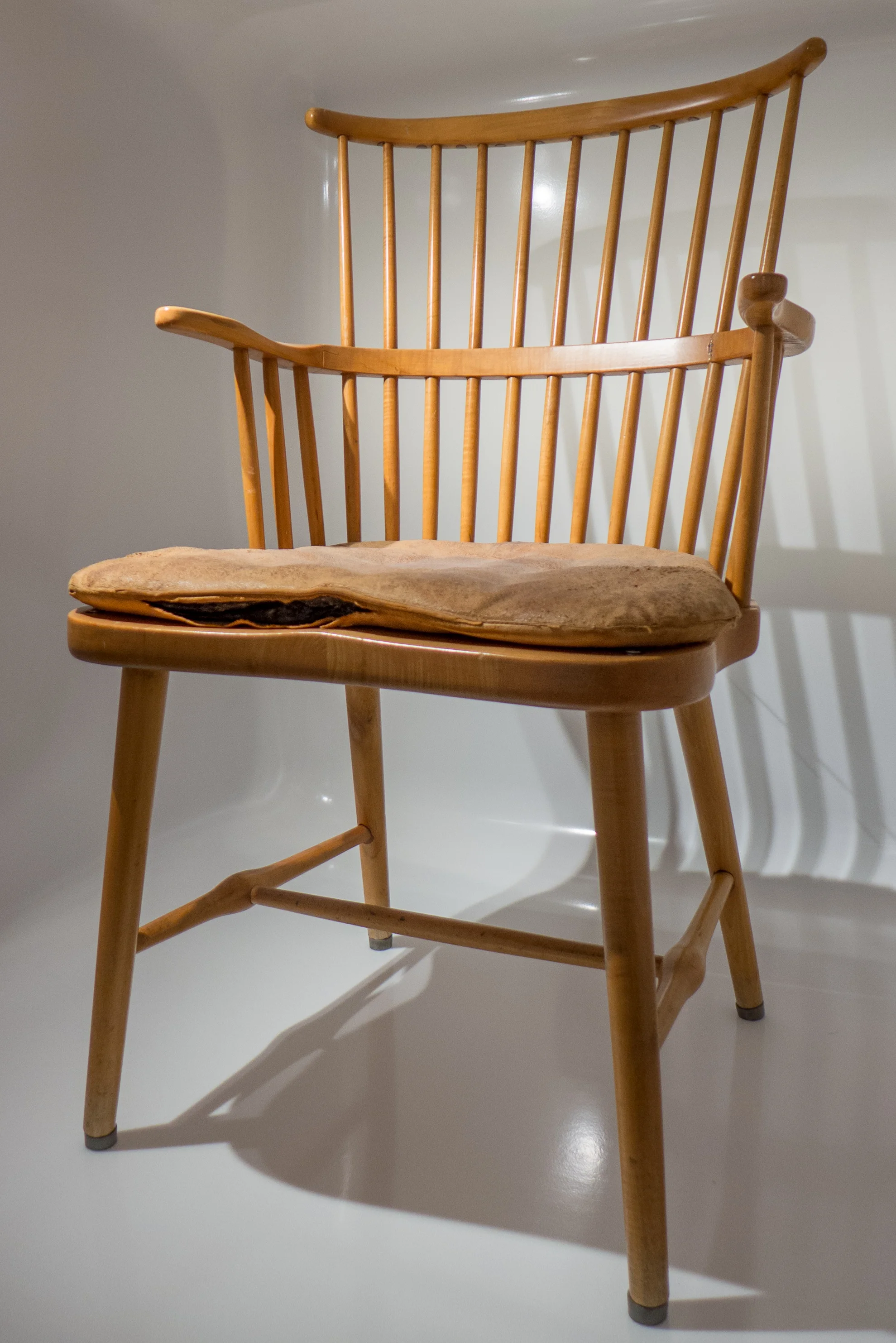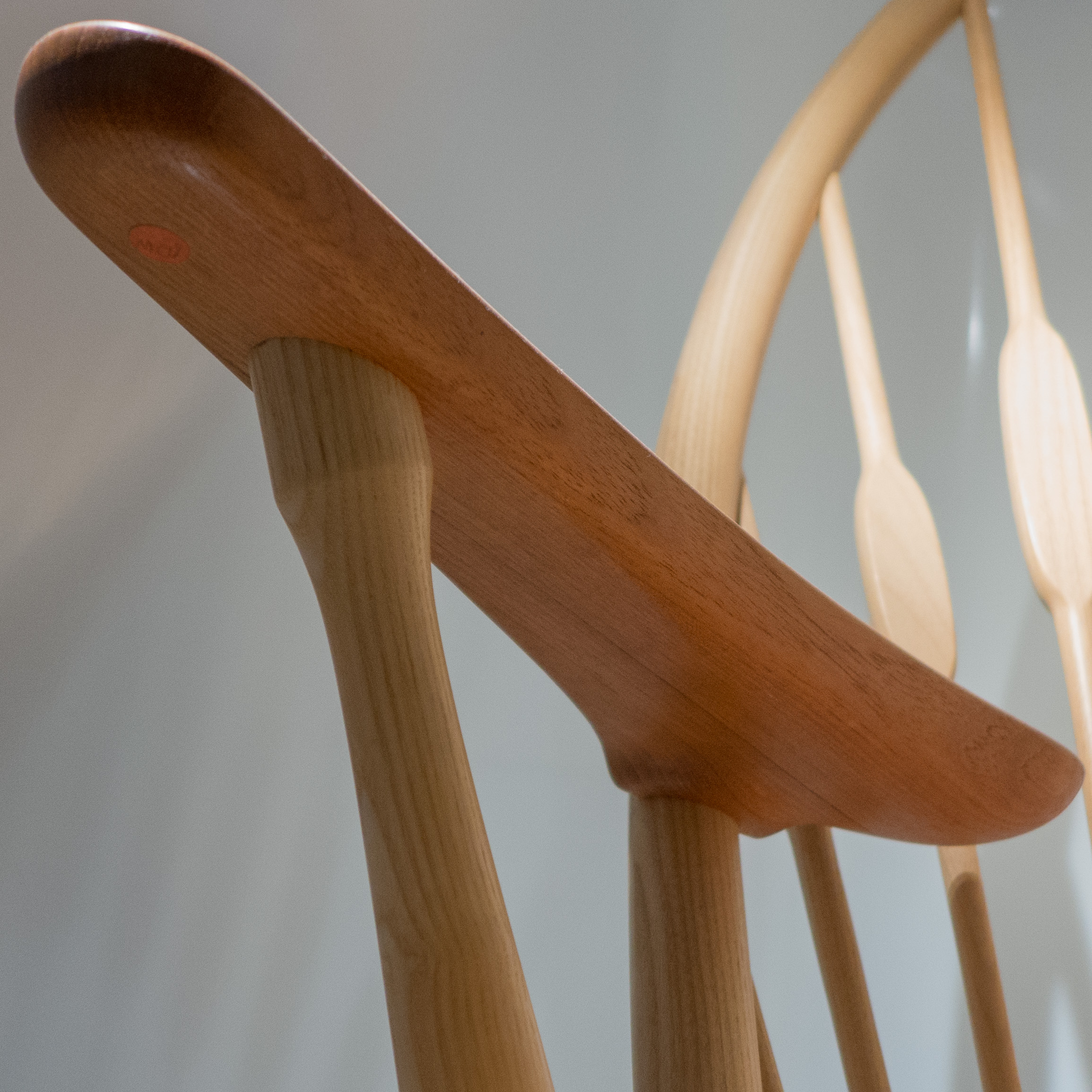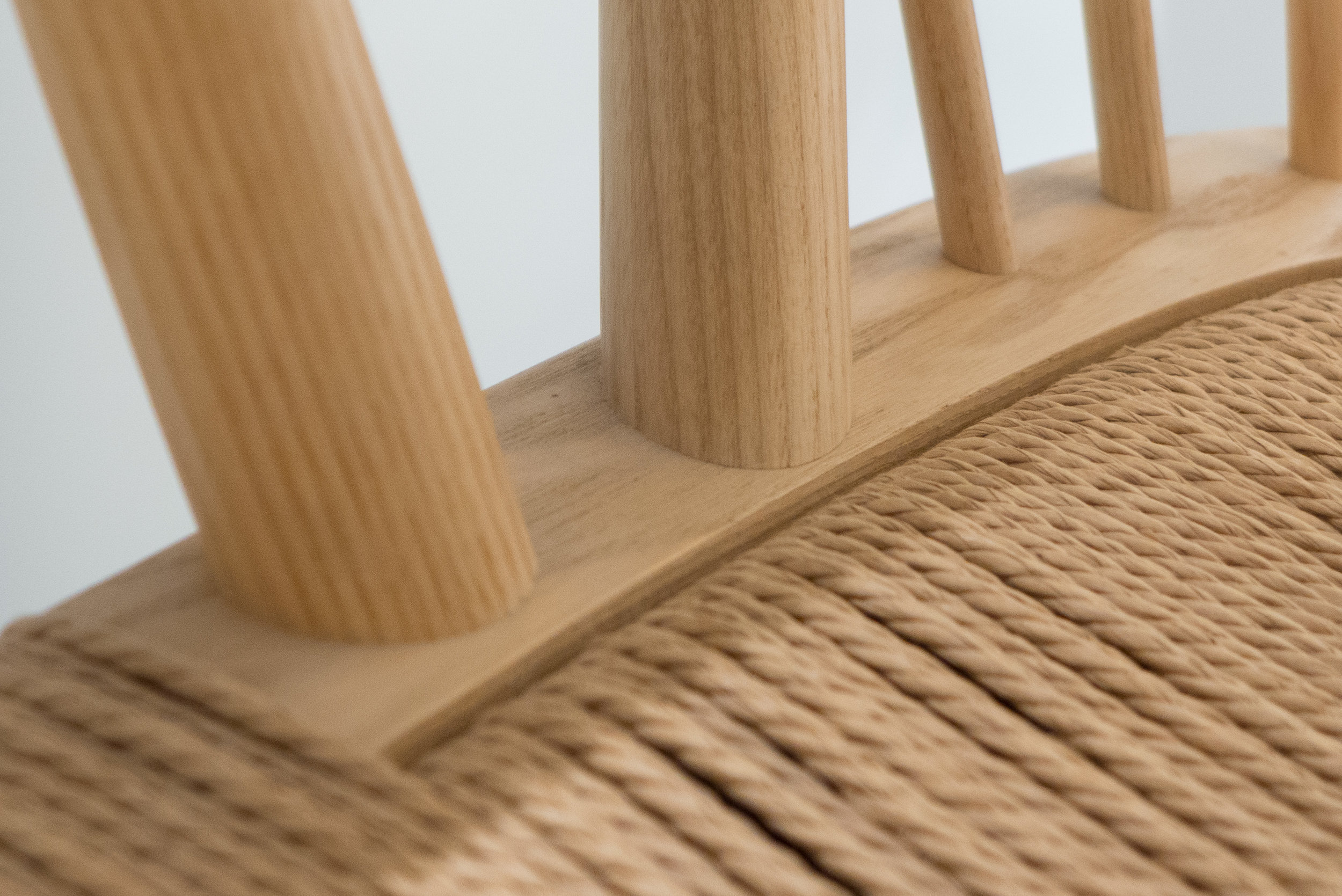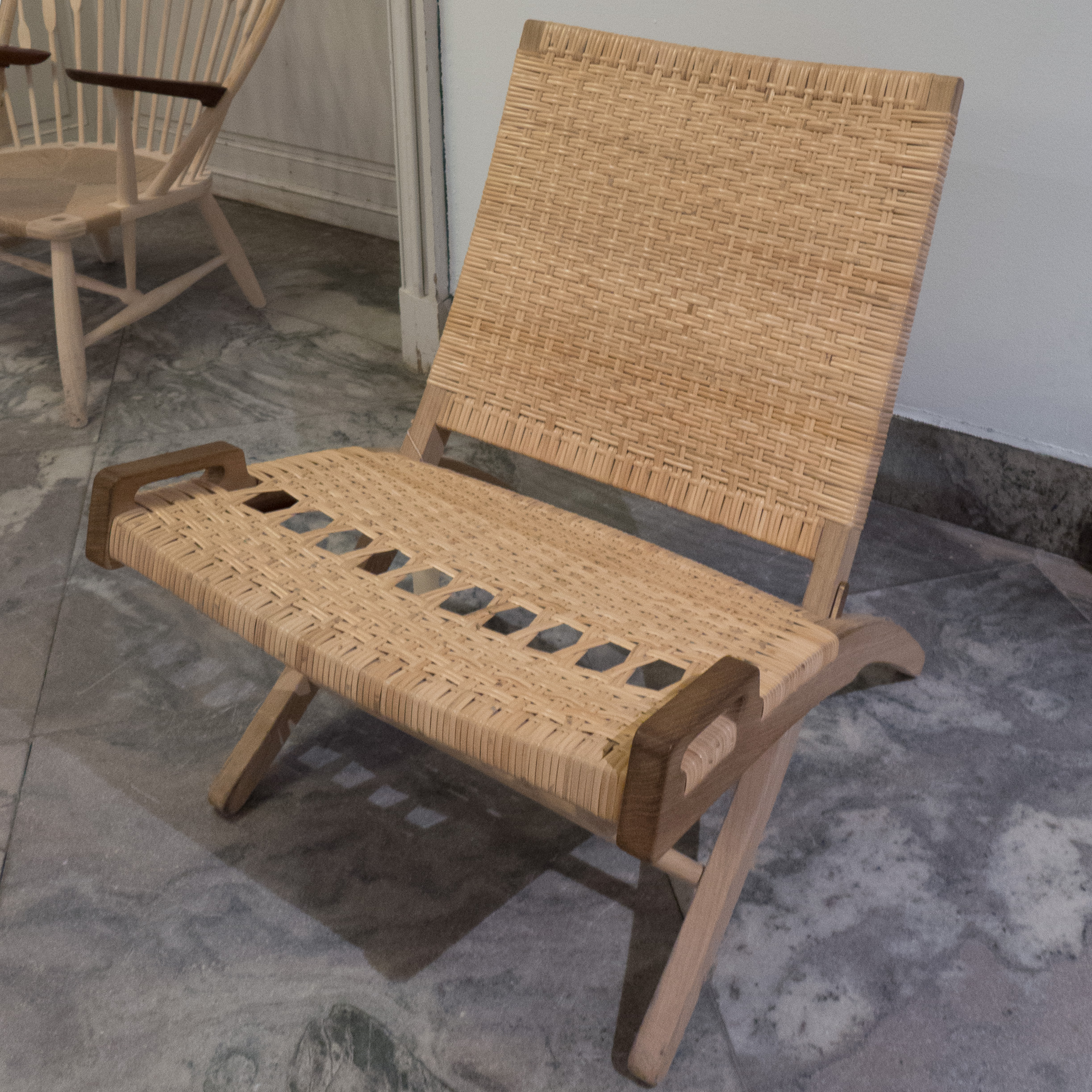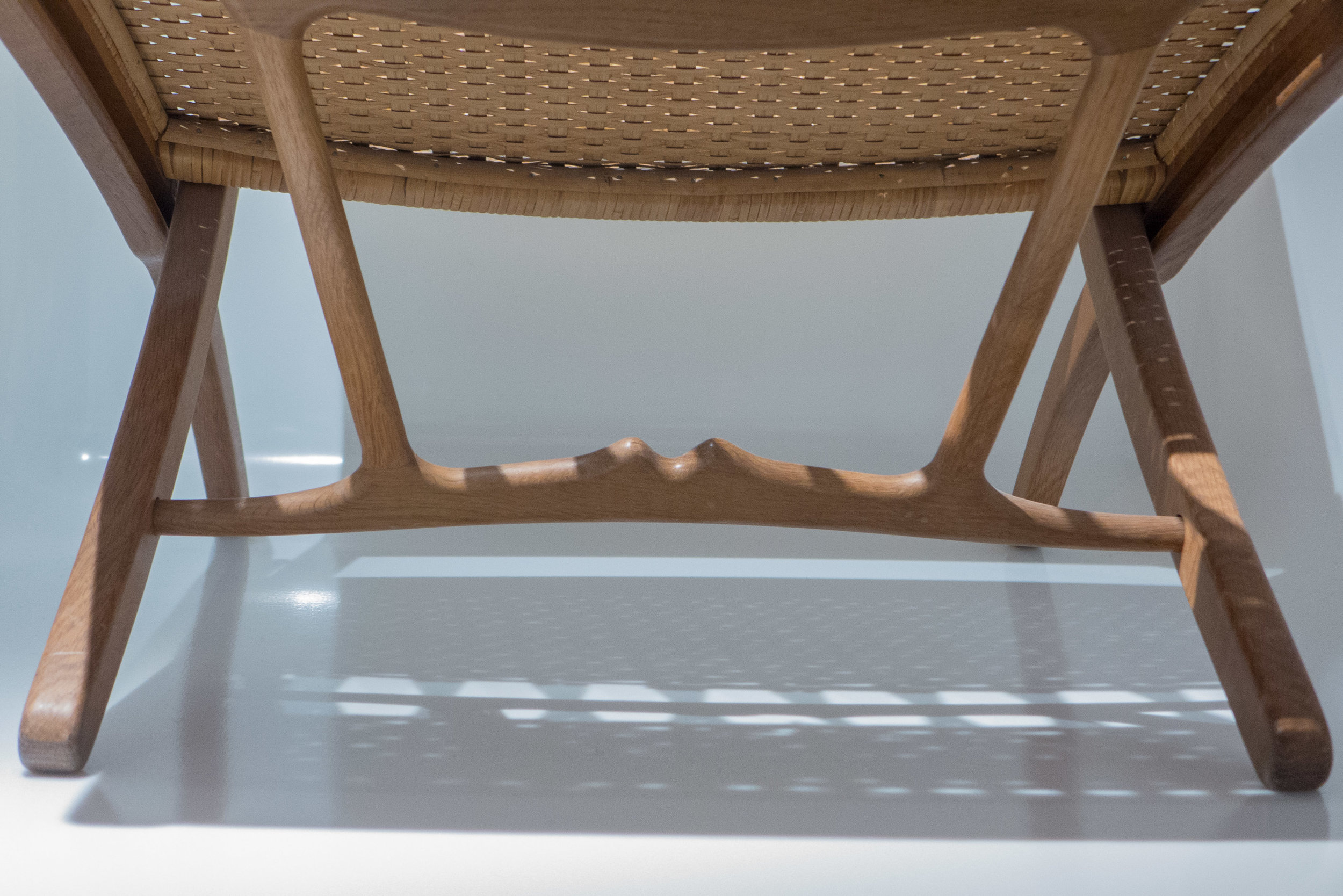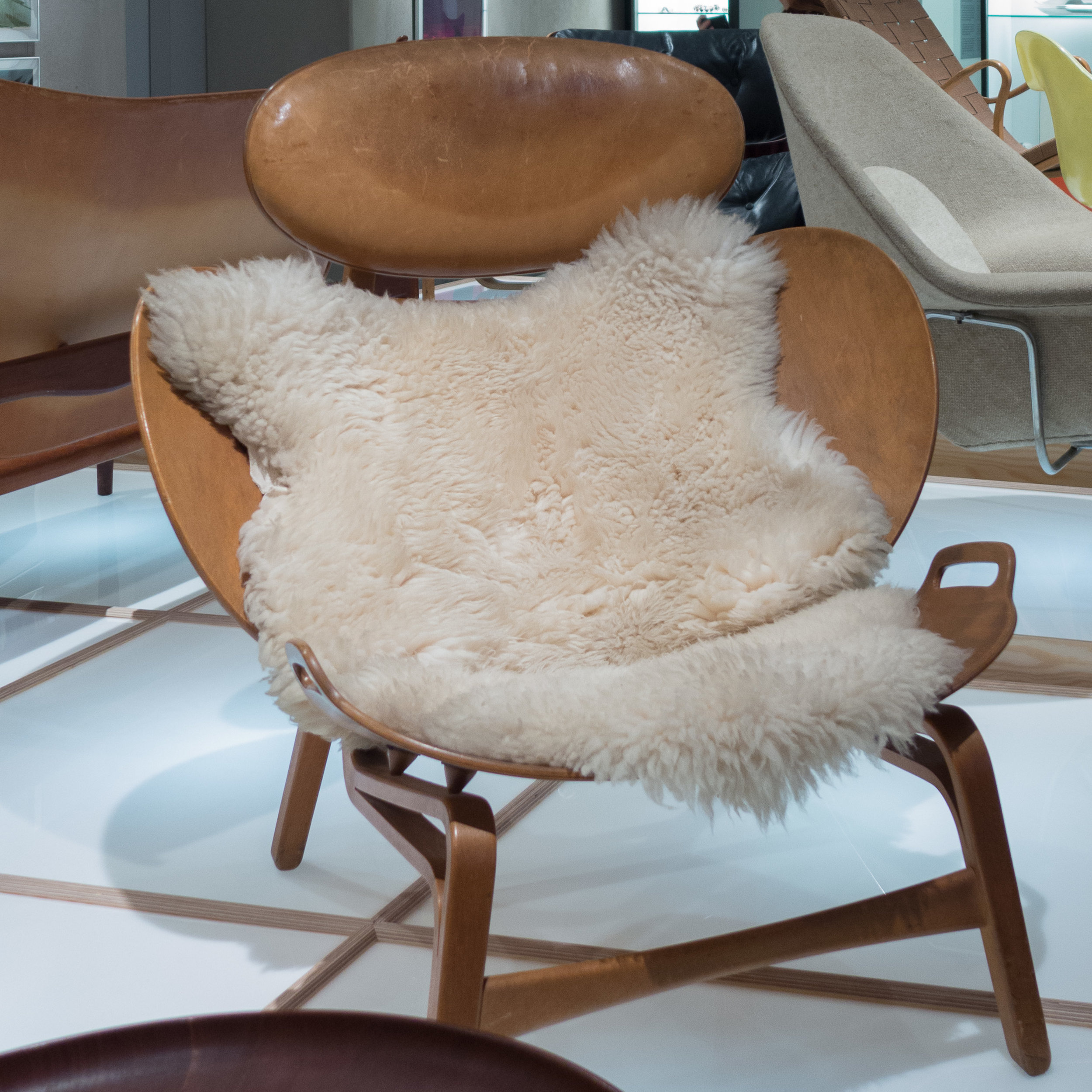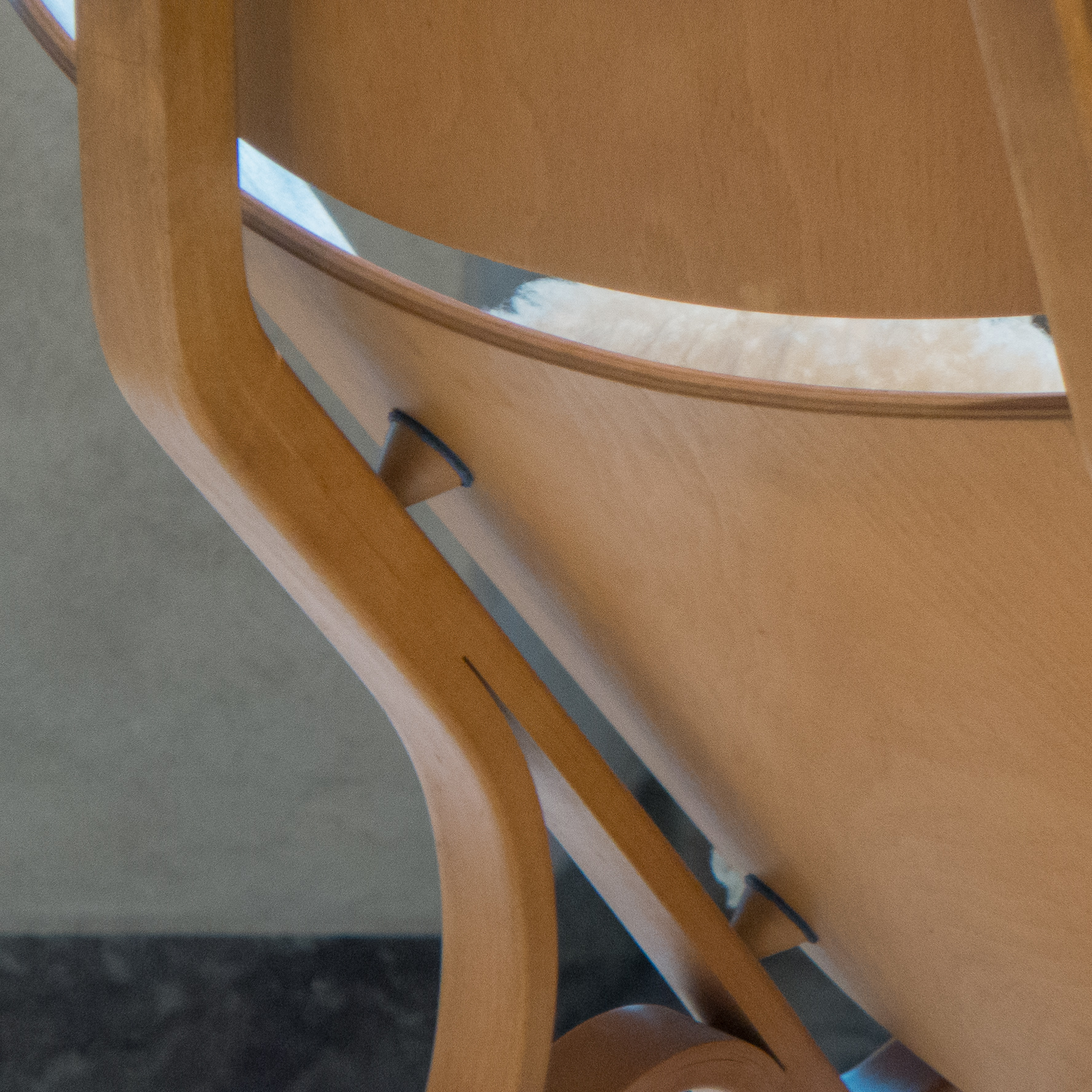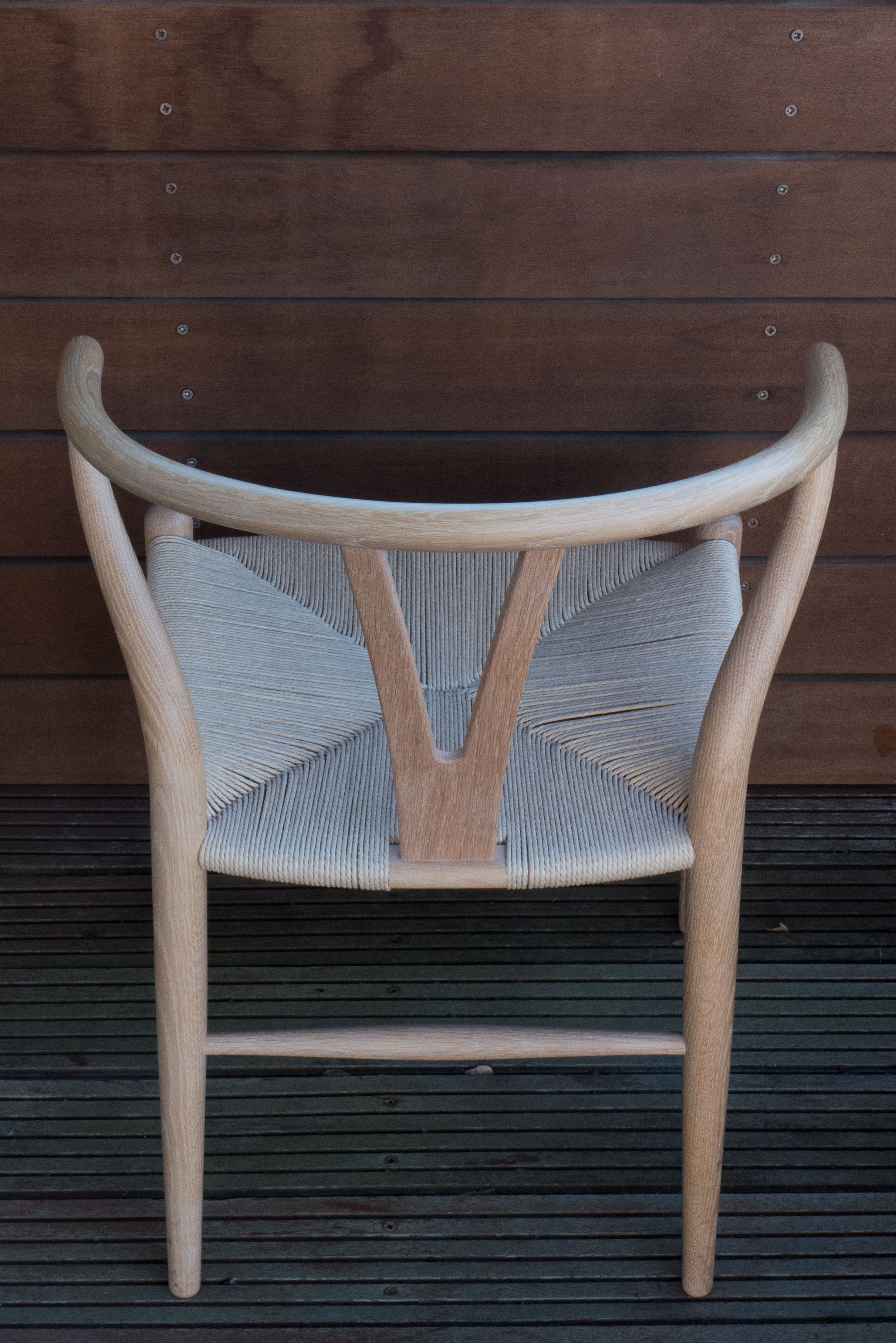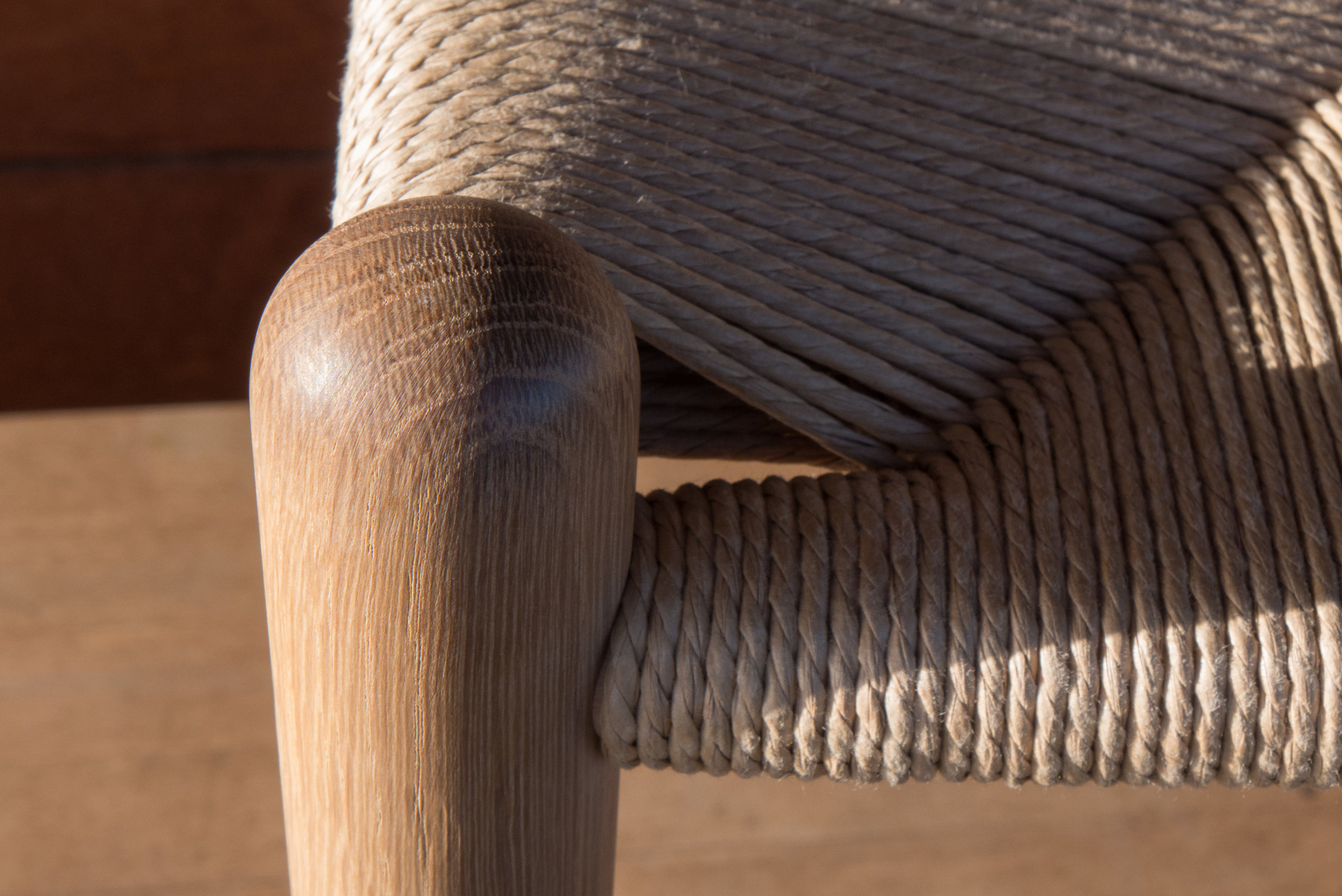chair for Nyborg Library by Hans Wegner 1938
/chair in the collection of Designmuseum Danmark in Copenhagen
Windsorstole / Windsor chairs
This is an early chair by Hans Wegner and is one design where he sticks closely to the form of construction and the details of a traditional chair … here an English style of chair known as a Windsor chair. When he was a student he had to measure and draw an old Windsor chair as part of his training.
For a Windsor chair with a high back there were two types … one with a length of steamed and bent wood forming a high loop with the space filled with vertical spindles or, as here, with one piece of curved wood set horizontally at the level of the arm rest and a shorter timber at a higher level, normally as a head rest, with spindles from that down to the top of the arm / back rest.
As here, the standard `Windsor chair had a solid wood seat - rather than a frame with cane or upholstery - and the seat was usually shaped rising to a slight ridge on the top at the centre to the front.
There are stretchers running back from the front to the back legs on both sides but not across the front or the back although there is a central stretcher across between the side stretchers forming an H shape below the seat to reinforce the frame of the legs. Both side stretchers are turned with a distinct swelling or bulge at the centre with simple holes drilled to take the ends of the cross stretcher.
The library in Nyborg (on the east coast of the island of Funen) was designed by Erik Møller and Flemming Lassen, following a competition in 1935, and the building was completed in 1939 with furniture designed by Hans Wegner. Erik Møller worked together with Arne Jacobsen on the town hall in Aarhus and again it was Hans Wegner who worked on drawings for the furniture and the fittings.
English Windsor chair from the mid 19th century. Perhaps not the most typical example but it was in the museum collection and was studied and drawn by the students of Kaare Klint. Note the form of the stretcher that appears in chairs by Hans Wegner
background:
In England this type of chair was made all over the country and mostly for farmhouses and cottages but was generally known as a Windsor as some of the best were made in the area of Berkshire around Windsor.
The spindles were usually in beech and were turned in the beech woods up on the chalk hills by men working with rudimentary lathes driven by a sapling or long flexible pole bent over the lathe to act as a return spring with a rope running down, looped around the work being turned and then on down to a plank that acted as a pedal. The pedal was pushed down whipping the spindle round then released quickly to raise the pedal back but with the piece of wood continuing to spin in the same direction. More complex turned pieces for legs could also be turned in the forest and then these parts were carried down into a nearby town where the chairs were put together.
The seat could be made elsewhere and was often a different wood … sometimes oak or even yew.


